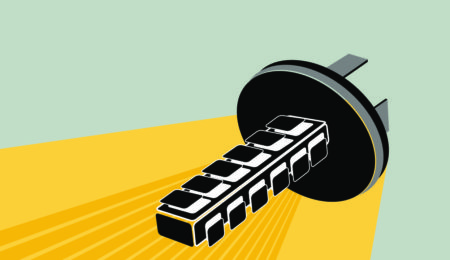Lighting is changing rapidly. LEDs are quickly overtaking older technologies and not just for headlamps.
Halogen and incandescent options for accessory lighting are also being replaced with LED options, and LEDs that replace these technologies are already available on the market.
What it means for you is an increasing number of options to offer customers, but with it comes some added elements to inventory.
Here are some tips to help you get the most out of the changing lighting market.
1) Bulk pack or card stock? If your walk-in retail is minimal, bulk pack options can be a great option for stocking.
2) Consider counterperson time and lost sales if you keep bulbs out of the showroom. Not all retail customers will ask; major retailers stock their showroom and they may be looking for the same in your store.
3) It is a good idea to have bulb application guides—there are paper and electronic options available from suppliers–where you display bulbs in the showroom. You may even want to have one at the counter if counterpeople are often kept busy on the phone with trade customers.
4) Retail approaches must consider shrinkage, especially with premium bulbs going for $40 each or more. The major retailers do stock their showrooms, but often use locked showcases for more expensive bulbs, or have signage telling customers to ask at the counter.
5) Talk to suppliers about warranty on high-performance bulbs. Major retailers may offer a 1-year warranty; you may have to match to compete.
6) LED bulbs are available as replacements for many older technology bulbs. Ensure you understand the options when deciding on stocking.
FACTS ABOUT LED TECHNOLOGY
Your lighting strategy should include LED options.
Studies have consistently forecast that LEDs are on the way up while most older technologies are on their way out. Driving this trend are fuel efficiency–helped by LED’s lower consumption and weight–and evolving styling imperatives that fit well with LED’s size lending well to flexible designs, and colour options.
If you have been selling heavy truck lighting—got a light board?—you are familiar with the performance and longevity benefits that LEDs can offer. LED lighting has been with us in that market since the 1990s, though styling in stop, turn, and signal lights was not really a priority.
But safety was and those LED stop lights had proven benefits in terms lighting faster, enabling following drivers precious fractions of a second more time to stop if necessary.
KEY LED DRIVERS FOR CUSTOMERS
- Unit cost tends to be higher than conventional bulbs but as access to stop/turn/tail lamps becomes more difficult—some vehicles require the removal of the entire light assembly, which should play well into the hands of the longer-lasting LED.
- LED replacements for conventional bulbs tend to be brighter.
- LED replacements for conventional bulbs will last longer. While some stop/brake/turn lights require replacing every years or two, LEDs can be expected to last 8 years or more.
- LED replacements offer colour options for customers who may want to have a custom look to their vehicle, or who just want to have a brighter light.
The usage of lighting-emitting diodes (LEDs) in automotive applications is increasing for many of the same reasons that LED lighting is penetrating non-automotive sectors. LEDs are more efficient and smaller in size, have a substantially longer life, allow considerably greater design freedom for improved aesthetics, and more. In brake lamp applications, the fast turn on of LEDs provides an added margin of safety to warn the driver of the car behind. LEDs can respond as much as ten times faster than traditional incandescent bulbs. In addition to this safety aspect, the color of LED lighting is more natural, making it safer for forward illumination. The ease of controlling LEDs also makes them a natural for intelligent lighting systems that adjust based on vehicle sensor inputs. An essential aspect of the control is the power management provided by integrated circuit (IC) drivers.


0 Comments